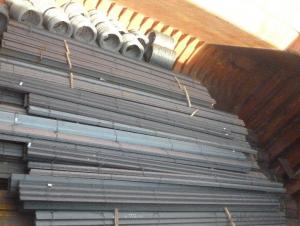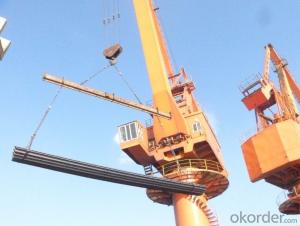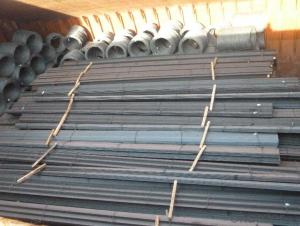Hot Rolled Equal Angle Carbon Steel Bar
- Loading Port:
- China Main Port
- Payment Terms:
- TT or LC
- Min Order Qty:
- -
- Supply Capability:
- -
OKorder Service Pledge
OKorder Financial Service
You Might Also Like
Product Description:
OKorder is offering Angle Bar at great prices with worldwide shipping. Our supplier is a world-class manufacturer of steel, with our products utilized the world over. OKorder annually supplies products to European, North American and Asian markets. We provide quotations within 24 hours of receiving an inquiry and guarantee competitive prices.
Product Applications:
According to the needs of different structures, Angle can compose to different force support component, and also can be the connections between components. It is widely used in various building structures and engineering structures such as roof beams, bridges, transmission towers, hoisting machinery and transport machinery, ships, industrial furnaces, reaction tower, container frame and warehouse etc.
.
Product Advantages:
OKorder's Angle Bar are durable, strong, and resist corrosion.
Main Product Features:
· Premium quality
· Prompt delivery & seaworthy packing (30 days after receiving deposit)
· Corrosion resistance
· Can be recycled and reused
· Mill test certification
· Professional Service
· Competitive pricing
Product Specifications:
1. Invoicing on theoretical weight or actual weight as customer request
2. Length: 6m, 9m, 12m as following table
3. Sizes
Payment:
-Invoicing on theoretical weight or actual weight as customer’s request.
-FOB, CFR or CIF.
-Regular terms of payment:
1, 30% payment in advance, the remaining balance (70% payment) against the copy of B/L.
2, 30% payment in advance, the remaining balance (70% L/C) against the copy of B/L.
3, Negotiable.
-The payment terms will be written in contraction detailed.
FAQ:
Q1: Why buy Materials & Equipment from OKorder.com?
A1: All products offered byOKorder.com are carefully selected from China's most reliable manufacturing enterprises. Through its ISO certifications, OKorder.com adheres to the highest standards and a commitment to supply chain safety and customer satisfaction.
Q2: How do we guarantee the quality of our products?
A2: We have established an advanced quality management system which conducts strict quality tests at every step, from raw materials to the final product. At the same time, we provide extensive follow-up service assurances as required.
Q3: How soon can we receive the product after purchase?
A3: Within three days of placing an order, we will begin production. The specific shipping date is dependent upon international and government factors, but is typically 7 to 10 workdays.
Q4: What makes stainless steel stainless?
A4: Stainless steel must contain at least 10.5 % chromium. It is this element that reacts with the oxygen in the air to form a complex chrome-oxide surface layer that is invisible but strong enough to prevent further oxygen from "staining" (rusting) the surface. Higher levels of chromium and the addition of other alloying elements such as nickel and molybdenum enhance this surface layer and improve the corrosion resistance of the stainless material.
Images:
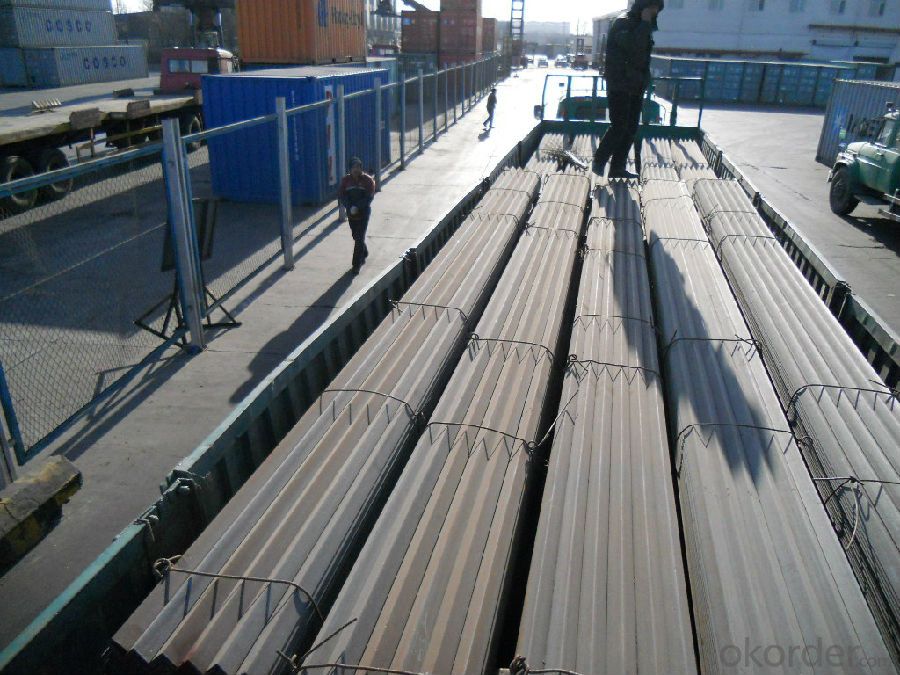
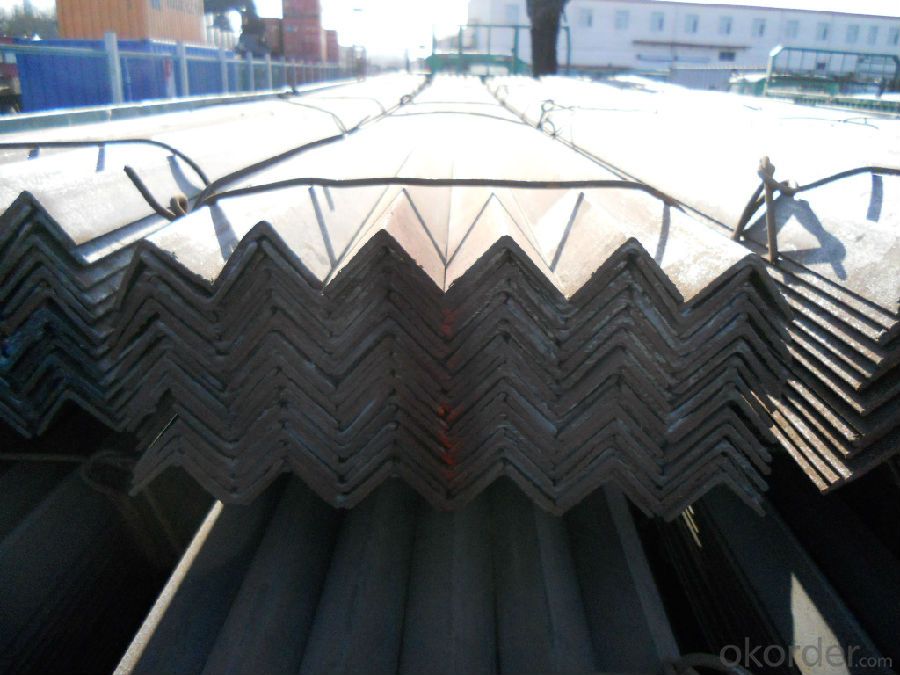
- Q:Are steel angles suitable for conveyor systems?
- Yes, steel angles are suitable for conveyor systems. They provide strength, stability, and durability, making them an ideal choice for supporting and guiding conveyor belts. Steel angles can withstand heavy loads, resist corrosion, and offer flexibility in designing conveyor structures.
- Q:Are steel angles subject to deformation?
- Yes, steel angles can be subject to deformation under certain conditions. The extent of deformation depends on various factors such as the load applied, the quality of the steel, and the design of the angle. However, steel angles are generally known for their strength and resistance to deformation compared to other materials.
- Q:What are the common sizes of steel angles?
- Common sizes of steel angles vary depending on the specific application and industry. However, some standard sizes for steel angles include 1/2 inch, 3/4 inch, 1 inch, 1 1/2 inch, and 2 inches. These sizes are commonly used in construction, engineering, and manufacturing projects.
- Q:How do you prevent steel angles from sagging?
- To prevent steel angles from sagging, there are several measures that can be taken: 1. Proper design: Ensure that the steel angles are designed and sized correctly for the load they will bear. This involves considering the span length, the applied load, and the material strength. Consulting with a structural engineer can help determine the appropriate size and thickness of the steel angles. 2. Adequate support: Provide sufficient support for the steel angles at regular intervals along their length. This can be achieved by using intermediate supports such as columns, beams, or braces. The spacing of these supports should be determined based on the load and the properties of the steel angles. 3. Reinforcement: Depending on the load requirements, additional reinforcements can be added to the steel angles. This can include stiffeners, gussets, or flanges to increase their load-carrying capacity and resistance to sagging. 4. Quality fabrication: Ensure that the steel angles are fabricated to meet industry standards and specifications. This includes proper welding techniques, accurate cutting, and appropriate surface preparation to avoid any weak points or defects that may contribute to sagging. 5. Regular inspection and maintenance: Regularly inspect the steel angles to identify any signs of sagging or structural issues. This can involve visual inspections, measurements, and non-destructive testing methods. Promptly address any identified problems to prevent further deformation and ensure the long-term integrity of the steel angles. By following these preventive measures, steel angles can be effectively protected against sagging and maintain their structural stability over time.
- Q:How do you protect steel angles from abrasive wear?
- There are multiple techniques available for safeguarding steel angles against abrasive wear. An effective approach involves the application of a protective coating or paint onto the steel surface. This coating acts as a barrier, preventing direct contact between the steel and abrasive substances, thereby reducing wear. It is crucial to select a coating specifically designed to resist abrasion, such as epoxy or polyurethane coatings. Another method entails utilizing rubber or polyurethane liners. These liners can be affixed to the steel angles, offering a cushioning effect and safeguarding against direct contact with abrasive materials. They find widespread usage in applications where steel angles are subjected to high levels of abrasion, such as mining or bulk material handling. In certain instances, it might be necessary to reinforce the steel angles with additional materials. This can be achieved by welding or bolting on wear plates or inserts composed of hardened substances like chromium carbide overlay or ceramic. These materials possess exceptional resistance to abrasion and can significantly prolong the lifespan of steel angles in abrasive environments. Regular maintenance and inspection also play a pivotal role in protecting steel angles from abrasive wear. By frequently examining the angles for indications of wear or damage, any issues can be promptly addressed, thereby preventing further deterioration. Additionally, implementing appropriate lubrication and cleaning practices can help minimize the adverse effects of abrasion on the steel angles. In conclusion, safeguarding steel angles from abrasive wear necessitates a combination of preventive measures, including coatings, liners, reinforcements, and regular maintenance. By implementing these strategies, the durability and performance of steel angles can be substantially enhanced in abrasive environments.
- Q:Can steel angles be used in agricultural applications?
- Yes, steel angles can be used in agricultural applications. Steel angles are versatile and durable structural components that can be used in various agricultural applications such as constructing farm buildings, barns, sheds, and livestock enclosures. They provide strength and stability to the structures, making them suitable for withstanding the heavy loads and harsh weather conditions commonly found in agricultural environments. Additionally, steel angles can be easily welded or bolted together, allowing for flexibility and ease of construction. Their corrosion-resistant properties also make them ideal for outdoor agricultural applications where exposure to moisture and chemicals is common. Overall, steel angles are a reliable and cost-effective choice for agricultural construction needs.
- Q:How do steel angles contribute to the overall strength of a structure?
- Steel angles contribute to the overall strength of a structure by providing additional support and stability. They are often used as structural elements in construction, acting as braces or framework members. Their L-shape design allows for increased load-bearing capacity, resisting bending and shear forces. By distributing the weight and stress evenly, steel angles help to prevent deformation or collapse, ensuring the structural integrity of the building.
- Q:What is the weight of a standard steel angle?
- The weight of a standard steel angle can vary depending on its size and dimensions.
- Q:What is the process of punching holes in steel angles?
- The process of punching holes in steel angles typically involves using a specialized machine called a punch press. The steel angle is securely clamped into the machine, and then a punch and die set is aligned with the desired location for the hole. The machine is then activated, and the punch is driven into the steel angle, creating a hole. This process can be repeated multiple times to create multiple holes in the steel angle, if needed.
- Q:Are steel angles cost-effective?
- Yes, steel angles are cost-effective. Steel angles are widely used in various industries and construction projects due to their versatility and durability. They are highly cost-effective because they are easy to manufacture, readily available, and have excellent strength-to-weight ratios. Steel angles also have a long lifespan, reducing the need for frequent replacements or repairs, which can save on maintenance costs in the long run. Additionally, steel angles are recyclable, making them an environmentally friendly and sustainable choice. Overall, the cost-effectiveness of steel angles makes them a popular choice for structural and architectural applications.
1. Manufacturer Overview |
|
|---|---|
| Location | |
| Year Established | |
| Annual Output Value | |
| Main Markets | |
| Company Certifications | |
2. Manufacturer Certificates |
|
|---|---|
| a) Certification Name | |
| Range | |
| Reference | |
| Validity Period | |
3. Manufacturer Capability |
|
|---|---|
| a)Trade Capacity | |
| Nearest Port | |
| Export Percentage | |
| No.of Employees in Trade Department | |
| Language Spoken: | |
| b)Factory Information | |
| Factory Size: | |
| No. of Production Lines | |
| Contract Manufacturing | |
| Product Price Range | |
Send your message to us
Hot Rolled Equal Angle Carbon Steel Bar
- Loading Port:
- China Main Port
- Payment Terms:
- TT or LC
- Min Order Qty:
- -
- Supply Capability:
- -
OKorder Service Pledge
OKorder Financial Service
Similar products
New products
Hot products
Related keywords
